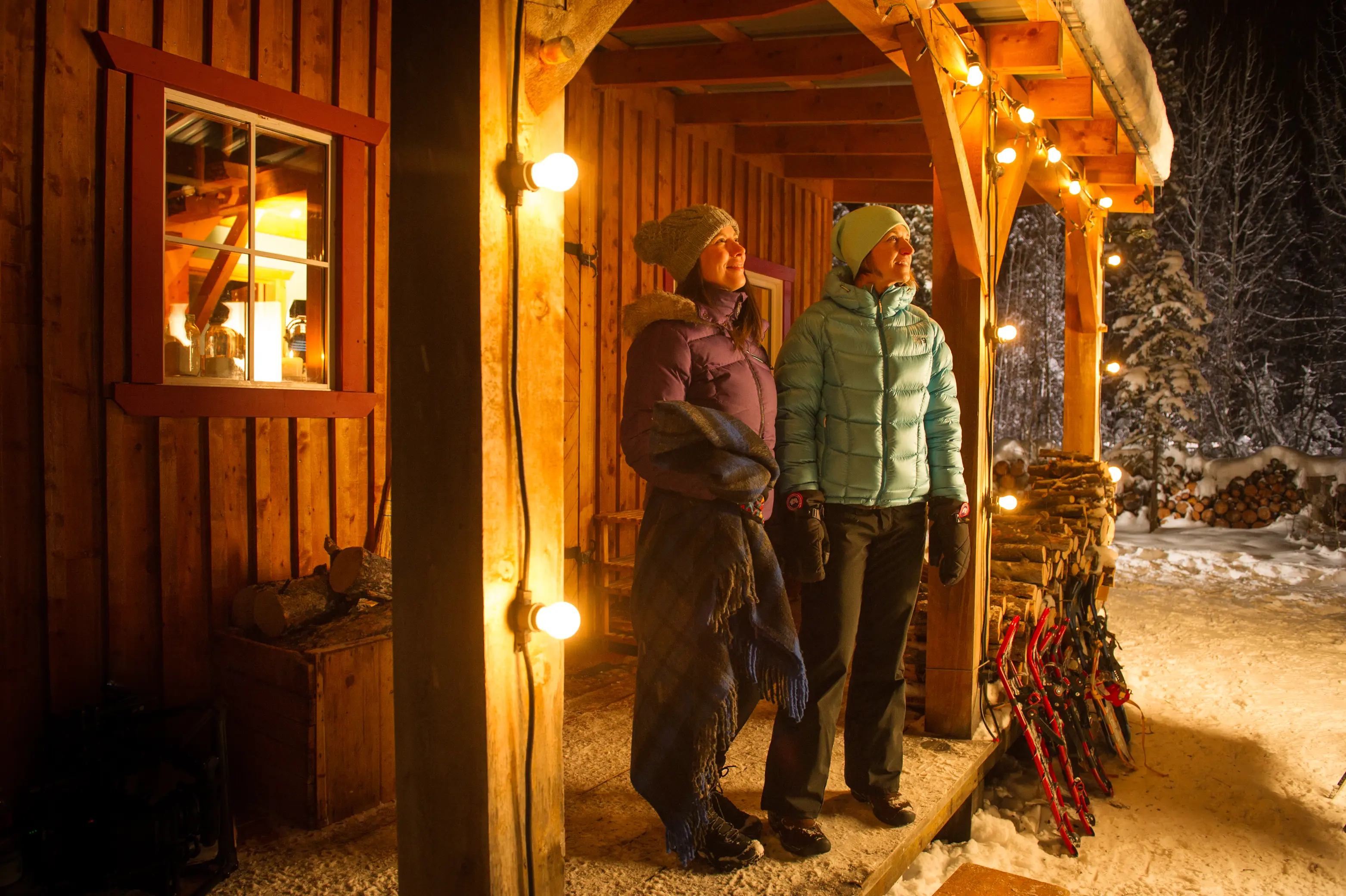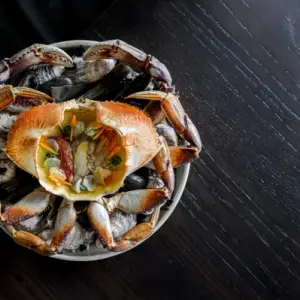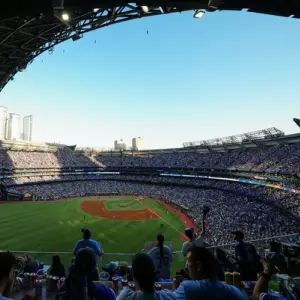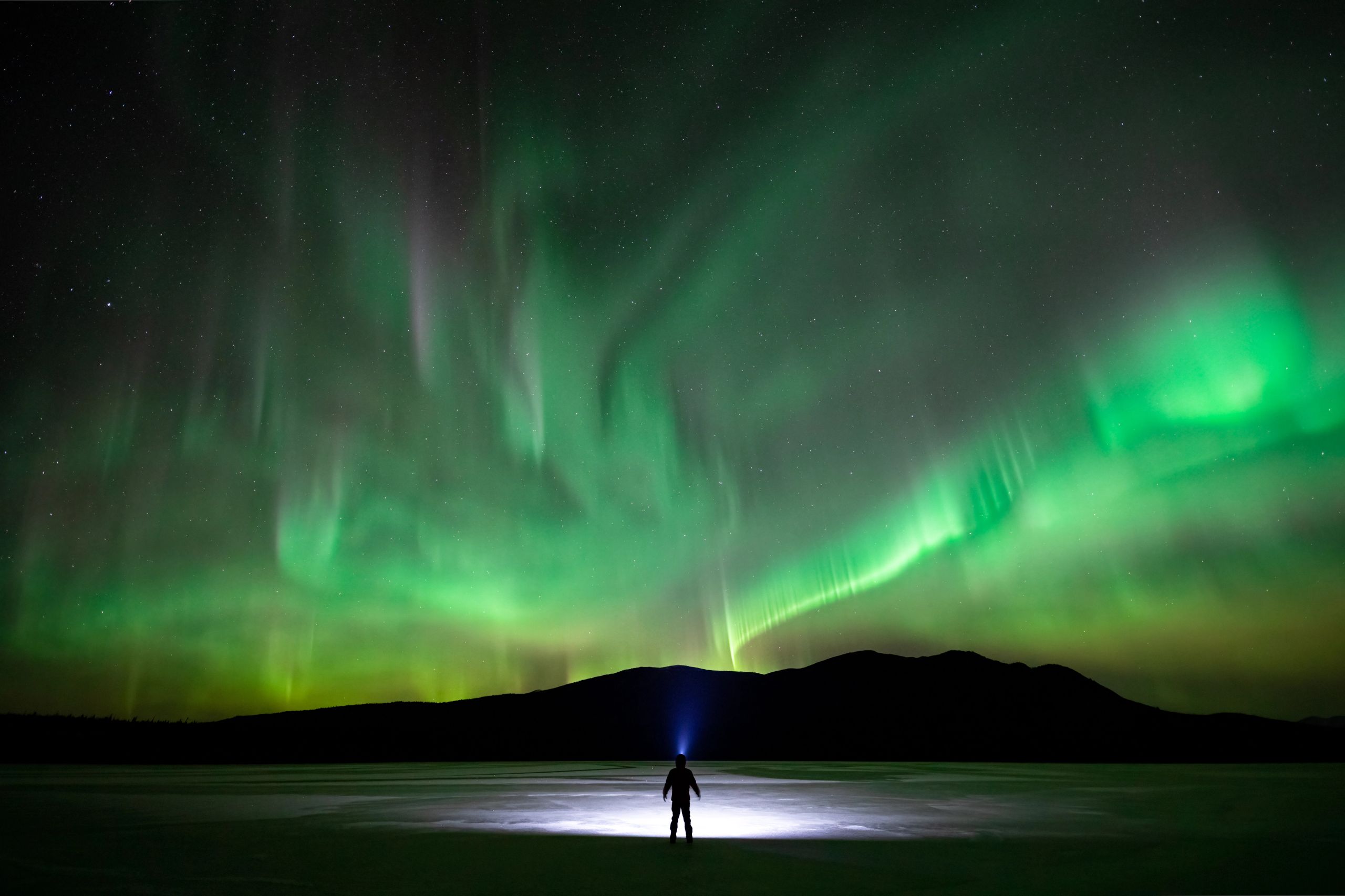
Seeing the northern lights in person doesn’t have to stay on your bucket list. In the Yukon, they’re easier to experience than you might think. The territory offers one of the planet's longest, most reliable aurora seasons, and it’s just a short flight from many Canadian and US cities. If you’ve always wanted to see the aurora but never quite knew where to start, this guide is for you.
Share
This feature is presented in partnership with Travel Yukon.
Few travel experiences compare to standing under the northern lights. The Yukon is one of the best places in the world to see them, with wide open skies, a long viewing season, and communities that welcome aurora chasers from across the globe.
If you’re coming from North America, you don’t have to cross an ocean to see the lights. The Yukon is closer than you think, and far less crowded than the usual European hotspots.
If you’ve always dreamed of stepping out into the night, snow crunching under your boots as the sky bursts with colour, but never knew where to start, this guide is for you: part inspiration, part practical know-how, and all designed to help you finally make the trip north.
When to Go (and How Long to Stay)
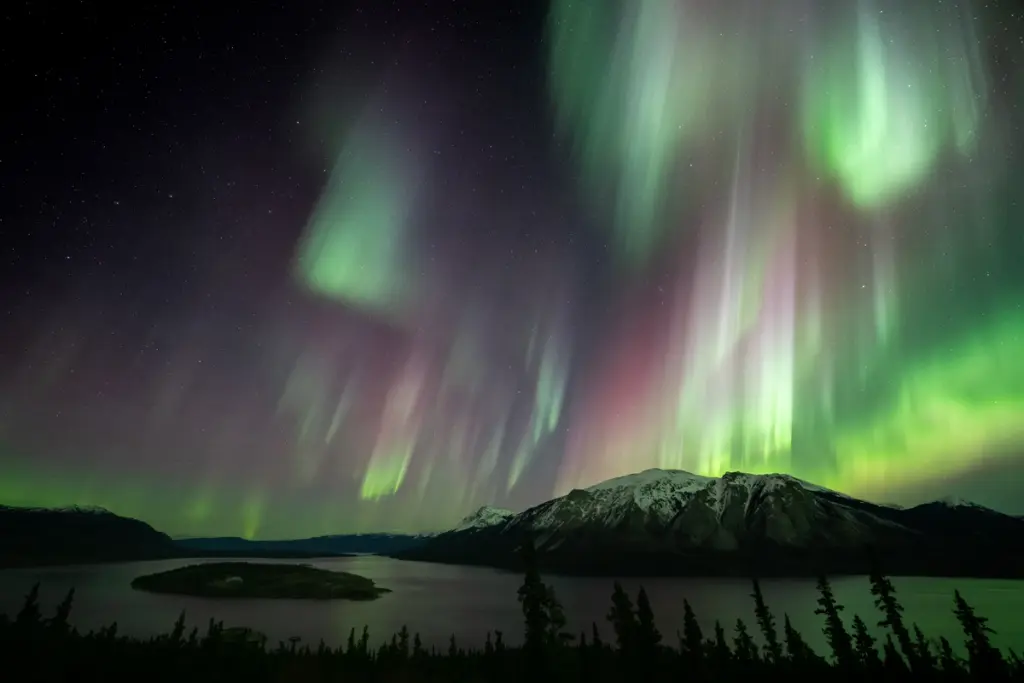
The aurora season in the Yukon runs from mid-August through mid-April, giving you an unusually wide window to plan.
- Fall (September to October): Crisp air, fewer crowds, and northern lights framed by autumn colours.
- Winter (November to February): The most reliable skies, the darkest nights, and the highest chance of intense aurora.
- Spring (March to April): Longer days for winter activities like dog sledding, balanced with late-night aurora viewing.
Plan to stay at least three to five nights. The aurora is natural and unpredictable, so giving yourself multiple evenings is your best insurance for seeing something spectacular.
How to Dress and What to Pack
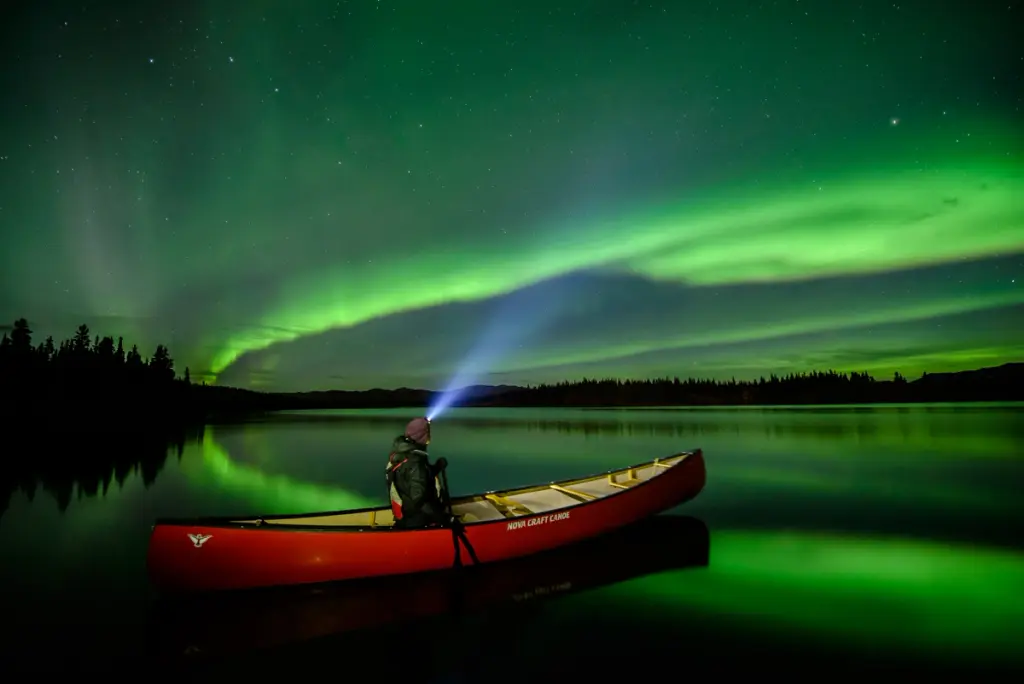
Yukon nights can be brutally cold, but the right gear makes all the difference.
- Layering is key: base layer (wool or synthetic), insulating layer (fleece or down), outer shell (windproof and waterproof).
- Winter musts: insulated boots, thermal socks, mittens, toque, balaclava or scarf.
- Extras: a headlamp with red-light mode, hand warmers, and a thermos.
Many tour companies and lodges provide full winter clothing rentals, including parkas, mittens, and boots, so you don’t need to invest in Arctic gear just for one trip.
How Aurora Tours Work (and What to Expect)
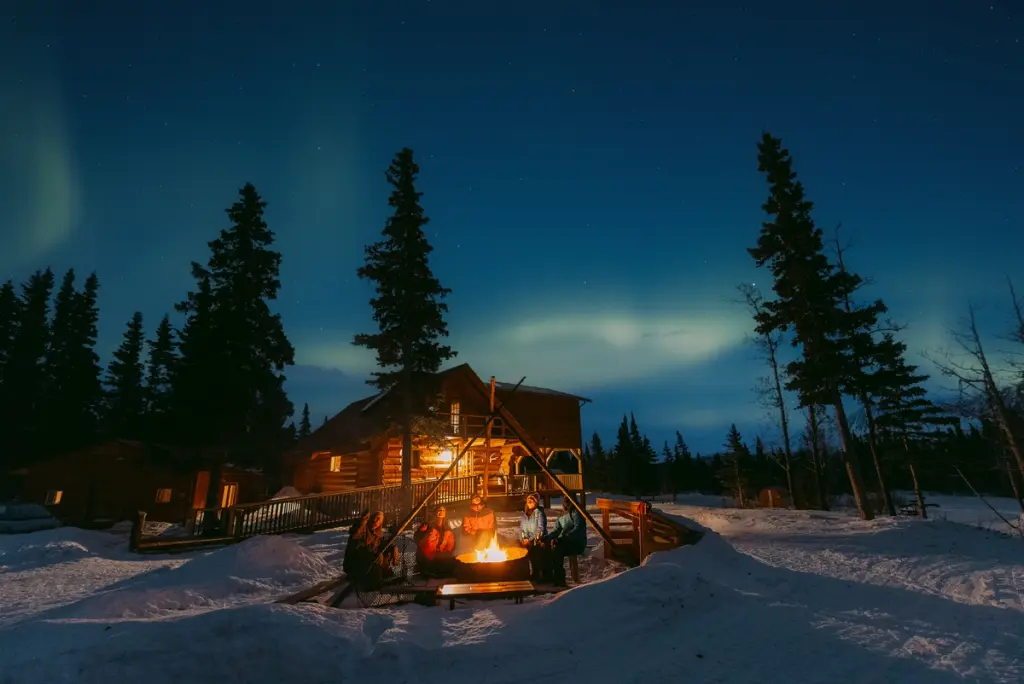
Most first-time aurora travellers base themselves in Whitehorse, where dozens of operators run nightly tours during the season. A typical evening begins with a pickup in town around 10:00 PM. Expect a short drive, usually about half an hour. That’s enough time to transport you into the wilderness, away from city lights, to a heated cabin or camp. Once you are there, it is a mix of anticipation and comfort: guides keep the fire going, hot drinks and snacks are served, and everyone waits for the show in the sky to begin.
Tours generally last four to five hours and return in the early hours of the morning. Along the way, guides share stories about the aurora, offer photography tips, and sometimes snap professional shots so you do not have to fumble with your camera in the cold. Some operators focus on stationary viewing from cozy basecamps, while others take a “chase” approach, driving to wherever skies are clearest.
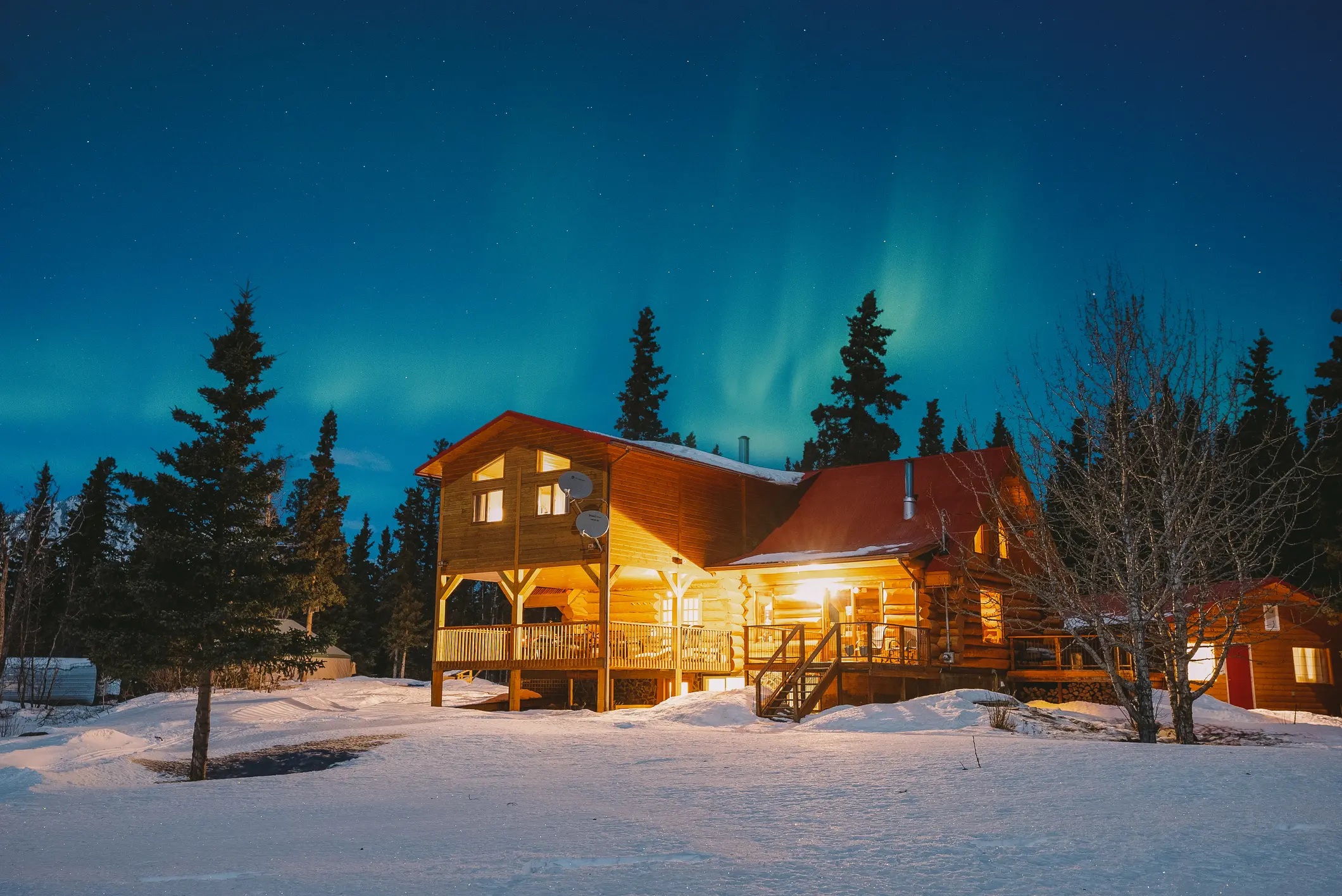
For those who want more immersion, there are multi-day lodge packages that combine daytime adventures like dog sledding, snowmobiling, snowshoeing, and hot springs with evenings under the lights. These experiences give you several nights in a row to maximize your chances.
Examples of well-reviewed options include:
- EPIC NORTH: provides a comfortable basecamp experience just outside Whitehorse with heated shelters, guides, and hot drinks.
- Northern Tales: offers multi-night cabin or lodge stays with additional activities like city tours.
- Arctic Range Adventure: pairs nightly aurora viewing with visits to the Yukon Wildlife Preserve and a soak at Eclipse Nordic Hot Springs.
- Klondike Experience: based out of Dawson City in the Klondike region, offering aurora viewing by night and local winter day trips.
How Often Do You See the Lights?
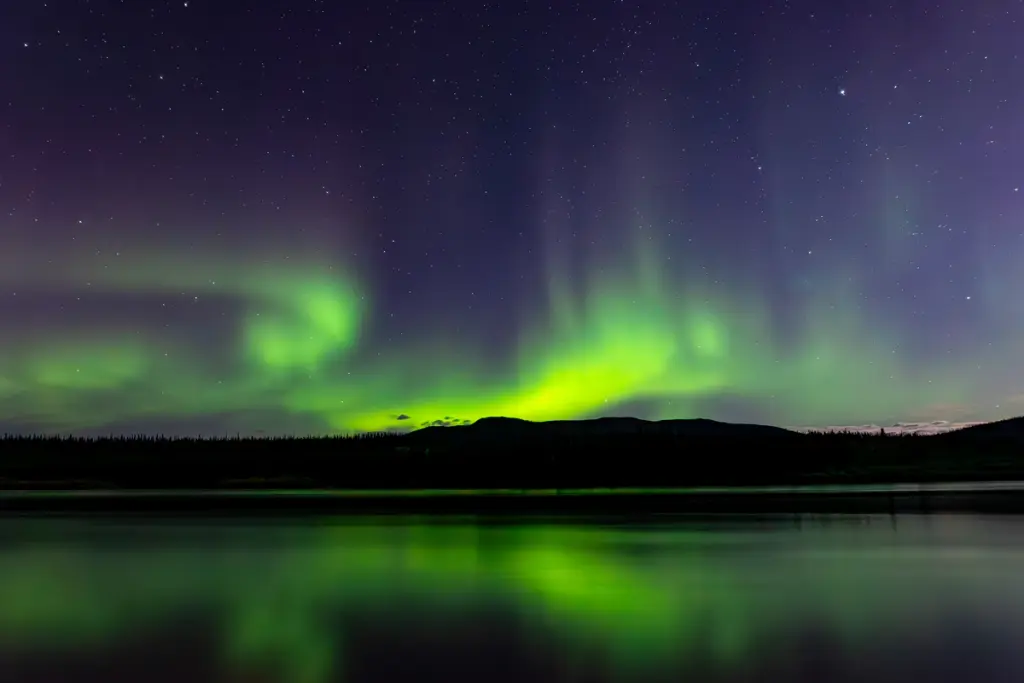
On clear nights in the Yukon, you have a high likelihood of seeing the aurora. Most operators report a success rate of 80–90% on clear nights. The intensity varies: some nights you will glimpse faint green arcs, others the sky will blaze with swirling curtains of colour. Sometimes the sky teases you with faint streaks before going pitch black and then suddenly bursting into life, and when it does, the wait suddenly feels worth it.
Tour guides monitor aurora forecasts, including solar activity and cloud cover, and adjust plans accordingly. Even then, it is nature’s show. Sometimes you wait, sometimes the unexpected happens. Giving yourself multiple evenings is the best way to improve your chances.
Common Myths, Busted
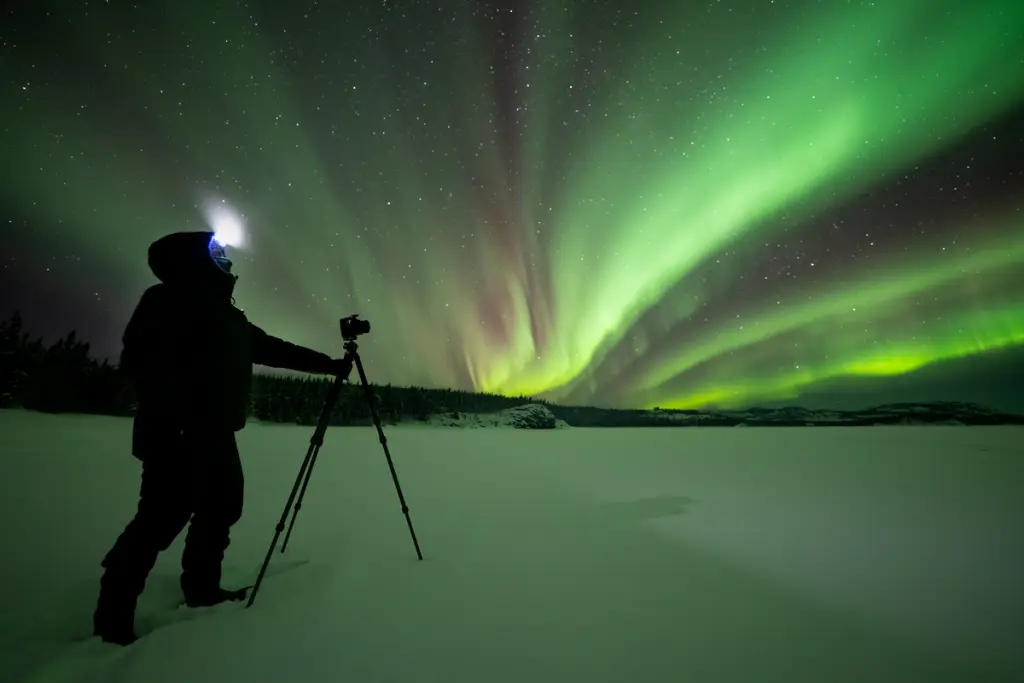
- “You need an expensive camera.” Today’s smartphones can capture the aurora surprisingly well, especially with night mode. A tripod and a camera can help, but you do not need pro gear.
- “It only happens in mid-winter.” The aurora appears as soon as the nights grow long enough, often in August, and continues into April.
- “You have to go deep into the wilderness.” Whitehorse offers excellent viewing just outside town. Darker skies will improve the show, but you do not need to travel far.
- “If you miss it one night, you are out of luck.” The Yukon sees aurora frequently during the season. Multiple nights increase your odds significantly.
Plan Your Trip
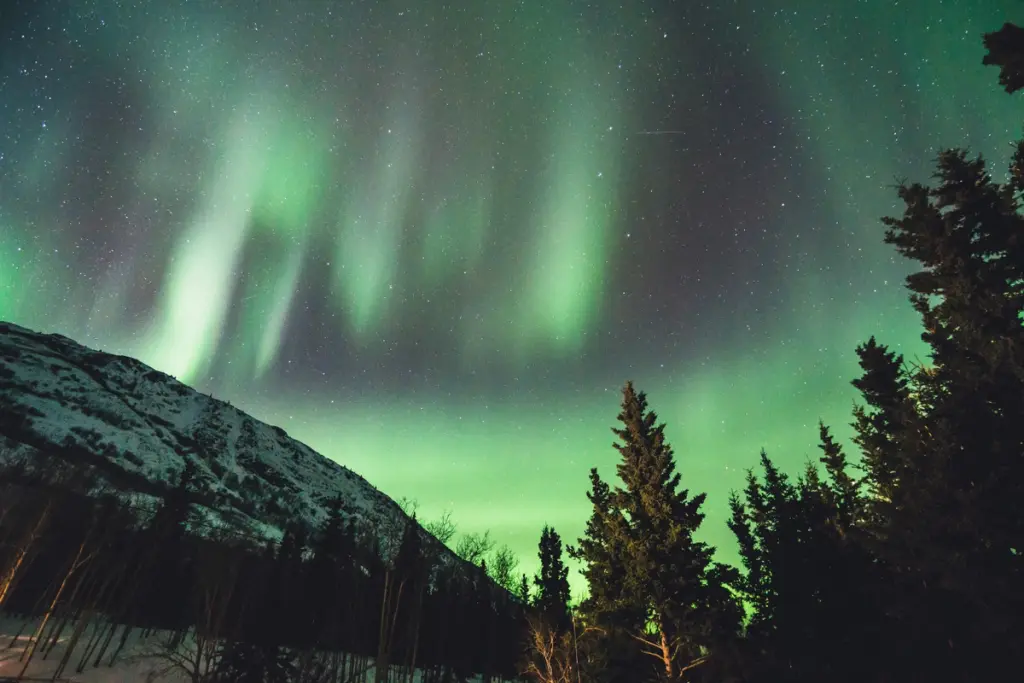
Getting to the Yukon is easier than most people expect. Direct flights to Whitehorse are available from Vancouver, Calgary, and Edmonton, with easy one-stop connections from cities across Canada and the US. Once you arrive, you can join a guided tour, rent a car, experience wilderness in a lodge or stay right in town and still have access to incredible aurora viewing.
Beyond chasing the lights, snowmobile trails, dog sledding, hot springs, and cultural experiences will fill your days with just as much wonder. The aurora is a highlight, but the Yukon itself is the story.
If the northern lights are on your bucket list, now is the time to make it happen. Start planning your Yukon adventure today with help from the information and resources at Travel Yukon.

Go Canada Staff
Editorial
Go Canada is a digital travel publication dedicated to being a trusted resource for information and inspiration for those traveling to and within Canada. Our mission is to showcase the very best Canada has to offer while making travel planning and trip preparation enjoyable and easy. Our staff is a diverse group of travel experts, writers, and content creators who are passionate about sharing their knowledge and love for Canada.
